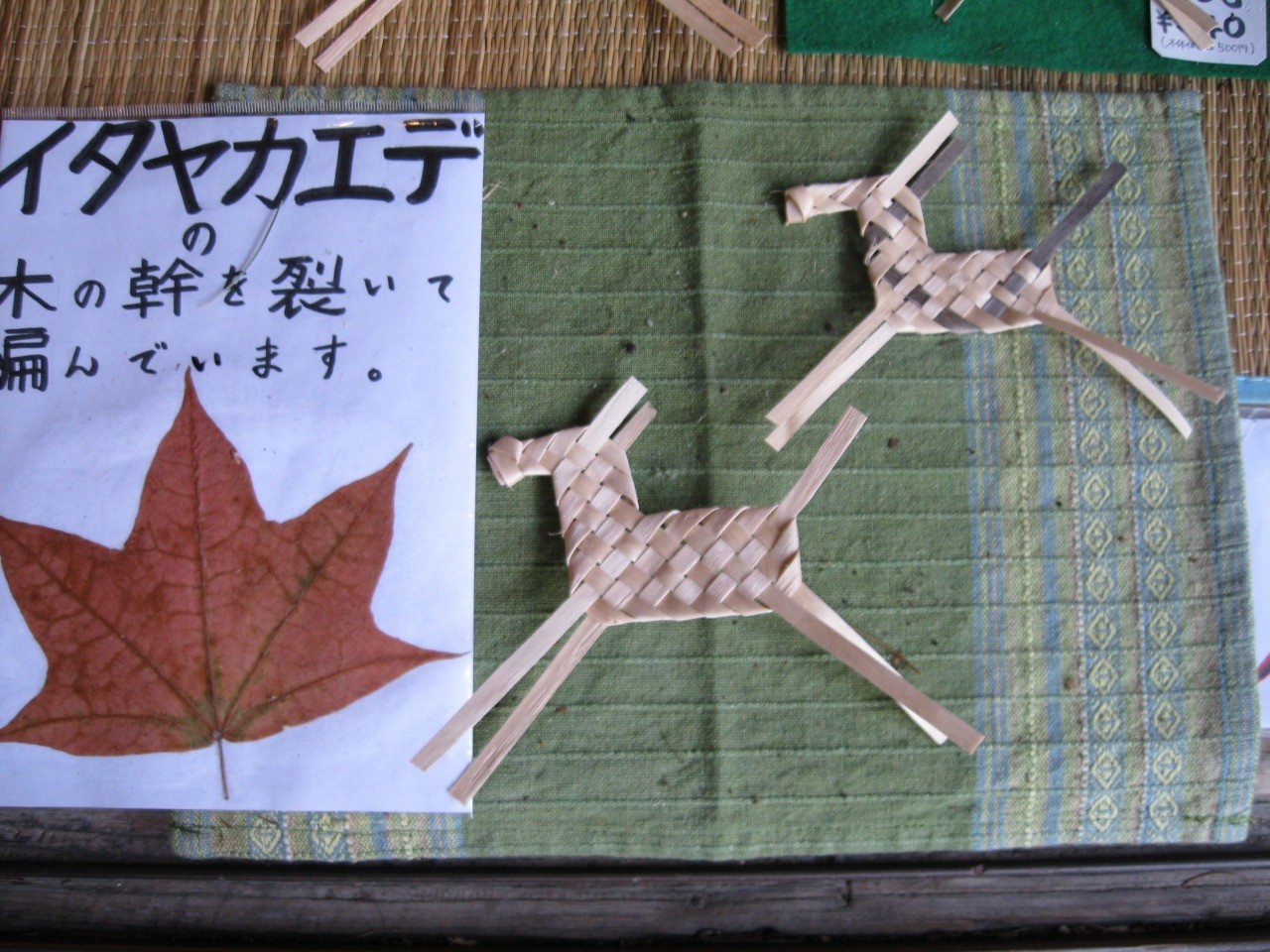Itaya Craft (Semboku City, Akita Prefecture)(Semboku City, Akita Prefecture)

Itaya handicraft is from the town of Kakunodate where thin strips of wood are cut from the trunk of a young Japanese maple tree and weaved to create various items. It is said that this technique originated as a side business of a farming village during the Kansei Period (around 1790), but there are no records left that document this history. This tells us that it is a purely rural handicraft, and with only a few simple folk tales describing its origin, it is safe to say that itaya handicraft is the epitome of folk craft. Itaya handicraft involves whittling thin strips of material from the timber and weaving them together, most of which is done by hand. It is often used to make items like Kakkobe (a kind of creel that wraps around the waist) and small wicker baskets. It is also very popular to craft folk toys such as Itaya Kitsune (wooden fox) and Itaya Uma (woven horses). It is a craft loved for its blend of deep tones created from the simplicity of the Itaya tree’s white bark.
- Address
- 秋田県仙北市角館町小人町4
- Telephone Number
- 0187-54-2700
- Opening Times
- 9:00-16:00
- Prices
- Duration
- Notes